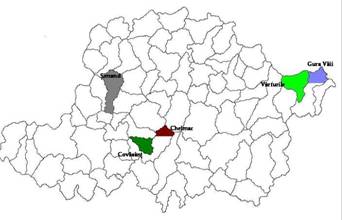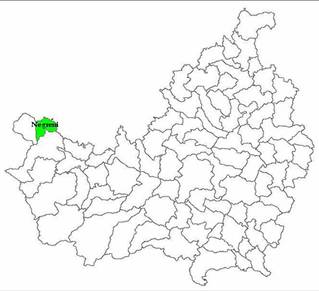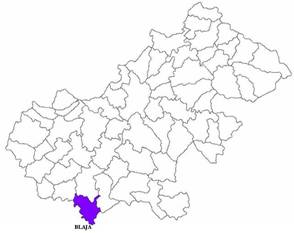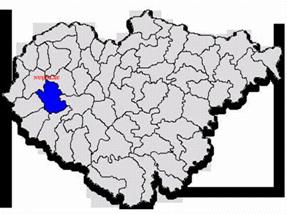
This year we set pheromone traps in 10 counties (Timiş, Arad, Hunedoara, Bihor, Cluj, Satu Mare, Sălaj, Caraş Severin, Alba, Mureş). For each altitude that was chosen depending on the presence of corn crops, 3 traps were set (the distance between them was of 100 m). This means 3 repetitions. The chosen altitudes correspond to 22 towns: Timişoara (110 m), Gătaia (115 m), Şimand (116 m), Covăsânţ (134 m), Chelmac (140 m) (foto 6), Şoimi (145 m), Blaja (150 m) Gura Văii (164 m) (photo 5), Gurasada (183 m), Nuşfălau (214 m), Vârfurile (228 m), Blaj (243 m), Prisaca (270 m), Târnăveni (278 m), Ighiu (292 m), Reşiţa (305 m), Negreni (388 m), Teregova (401 m), Budureasa (392 m), Zlatna (435 m) Vălişoara (447 m) and Domaşnea (557 m). The number of experimental versions, compared to last year, grew out of the necessity to cover a larger area of research. The movements to the experimental versions were facilitated by the auto-lab which was bought during the present contract. The setting of the altitudes was done with the help of the GPS. The traps were read every day and the data record was done on the spot, in special registries. During the monitoring activity the same traps were used as last year. Csalomon ® Diabrotica v.v. (type panel/2) made in Hungary. The pheromone traps were installed between 16.06.2009 -.24.06.2009. They were read daily and the panels and pheromones were changed once in 2 weeks. The daily observations were recorded in the computer to be statistically read.
If we observe the table we can say that the higher the altitude, the lower the captures on every trap. A special situation was at the altitude of 140 m, from where the highest number of traps was registered (21323 adults of Diabrotica v.v.), compared to the altitude of 110 m where the total number of adults was of 14582 adults.
By analyzing the obtained data according to the climatic factors and the comparative study on different geographical areas, the spreading maps were in need, on which patterns of prediction can be established. Positive correlations between the number of captured specimen and the air temperature was recorded in the following towns: Simand (0.52), Domansea (0.50). Also, a positive correlation was obtained between the climatic factor, the soil temperature, and the number of captures of Diabrotica Virgifera virgifera. This link was observed in the following towns: Domasnea (0.62), Resita (0.51). Negative correlations (-0.50) between the soil temperature and the average number of captures/day were recorded at the altitude of 145 m (Soimi - 270 m, Prisaca - 403 m, Budureasa). Correlative positive links (0.62) were recorded between the humidity of air and the average number of catches of Diabrotica v.v. adults/day. The other climatic factors taken into study did not have correlative links to the caught specimen, this statement being mathematically supported. To a better view of the frequency of the species in different geographical areas, one can observe the partial maps with the climatic conditions from the observational points found at different altitudes. Partial spreading maps
Partial conclusions The number of catches decreases when the altitude increases. |
||||||||||||||||||||||||||||||||||||||||||||||||||||||||||||||||||||||||||||||||||||||||||||||||||||||||||||||||||||||







